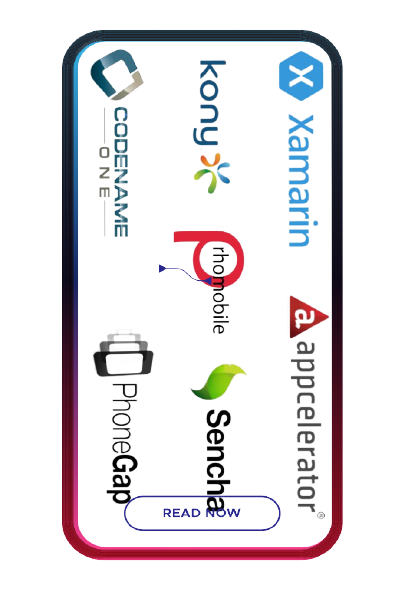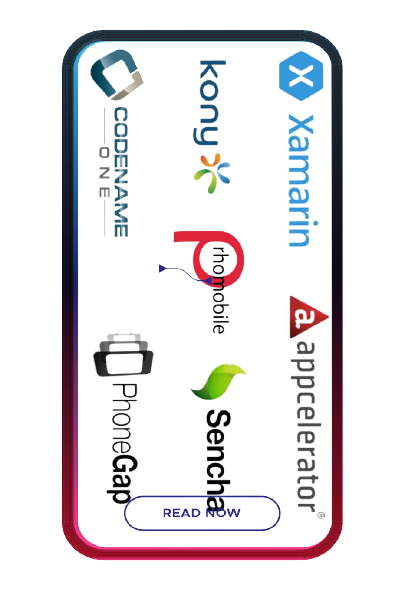App development is popping bent be the foremost important element of building a strong mobile ecosystem. Ever since the app revolution started in 2008, the mobile app development industry is evolving and growing at a rapid pace. cross platform Mobile app development is empowering the burgeoning economy and moving towards conquering the new frontier of Internet of Things that connects applications like wearables, smart home applications, sensors and smart car that gather, process and transmit data.
In the mobile app industry, there are new innovations and updates happening almost a day . it’s a frightening task to stay pace with the fast-pace of developments and modifications. there’s no denying that developer’s programming and app development skills will determine the high performance and quality of apps. However, we’ve put together few tools which will help developers stay updated with the newest developments and implement new features during a hassle-free manner.
Growing number of mobile devices and mobile platforms, the market has been fragmented up to an excellent extent. The cross platform applications allow developers to write down the code once then deploy it on multiple devices and platforms. However, the large number of obtainable tools for cross platform development has created tons of difficulties for the developers to settle on the proper tool.
Top cross platform mobile app development platforms and tools, that leave rapid software development and deployment

1. Apache Cordova
Apache Cordova is first on this list because it powers the build process for many free cross platform mobile application development tools, and lots of that are not free, for that matter. Formerly referred to as PhoneGap, Adobe released Cordova as an open-source project which, as of this writing, has received contributions from BlackBerry, Google, IBM, Intel and Microsoft.
The majority of cross platform mobile application development tools on this list, both free and paid, use Cordova to package one codebase into a native executable. Cordova first bundles HTML, CSS and JavaScript into a client-side package. Then, the software executes and renders the custom code within a native WebView — this is often referred to as the “hybrid” application technique. The hybrid approach provides a Write-Once-Run-Anywhere solution (WORA).
The term WebView refers to a native interface element that allows mobile developers to render web page in their application. In web development, we use Iframes; in mobile development, WebViews.
By wrapping web code during a native Cordova package, Cordova can provide access to native APIs. And by incorporating community-built plugins, apps can hook up with any number of these APIs using plain JavaScript.
2. Adobe PhoneGap
Yes, the particular PhoneGap product is break away Apache Cordova. As stated above, PhoneGap was originally the idea for Cordova, but is now a standalone product powered by Cordova—times they’re a changin’. the first benefit Adobe provides with PhoneGap may be a GUI build system that abstracts the instruction messiness of Apache Cordova.
By providing an interface to create Cordova applications, PhoneGap simplifies the method and gets developers working sooner. PhoneGap also offers an application server you’ll run from your machine to host your apps over the network. The server accelerates the build→run→revise loop so developers can spend longer coding and fewer time running, compiling, and deploying manual updates.
3. Mockplus iDoc
Good collaboration between designers and developers makes it possible to make an unprecedented miracle for a product team. Having an jointed online platform/tool for them to collaborate effortlessly is additionally incredibly helpful.
To offer an excellent online design collaboration solution for designers and developers, Mockplus launched Mockplus iDoc, a fresh product design collaboration tool, on November 8.
Mockplus iDoc may be a powerful product design collaboration tool for designers and engineers by creating a connected online space for product teams. It goes beyond the planning workflow and helps teams with the planning hand-off. It greatly facilitates the handoff by taking designs from Photoshop, Sketch, Adobe XD and exporting them into a format which will easily generate code snippets, style guides, specs, and assets.
3. Ionic Framework
In the previous section, I revealed that PhoneGap may be a thin layer above Apache Cordova that improves the hybrid development experience without forcing an application paradigm or structure onto the developer. For an identical yet more opinionated tool that gives a superb development experience, consider the Ionic Framework.
Ionic combines Angular with its own UI library to supply a cross platform mobile application development experience that a lot of web developers will find familiar. They find it so familiar actually , that Ionic has become synonymous with cross platform hybrid development. More so than PhoneGap, actually. However, Ionic’s mobile build process relies on PhoneGap and thus also inherits all of Apache Cordova’s plugins.
4. Framework 7
Framework7 is another one among the free cross platform mobile application development tools powered by Apache Cordova. Framework7 provides an application framework (built on Vue.js) and a number of ready-made interface elements that mimic native interfaces. This tool recreates standard iOS designs and Google’s Material Design patterns to duplicate the “native look” mobile users expect. Here’s an example of how Framework7 helps developers make carbon copies of iOS designs:
0:15
Framework7 also allows developers to customize the interface — these built-in themes are merely guidelines which will shorten development time.
5. Apache Weex
Yes, this is often another one among the Apache-sponsored free cross platform mobile application development tools. The developers of Weex combined the thought behind Cordova with a runtime JavaScript interpreter. Their tool generates native experiences from one ASCII text file whereas Cordova executes JavaScript and renders HTML during a WebView. Weex interprets HTML and renders it dynamically using native view elements.
Like Framework7, Weex provides UI components out of the box. But these elements translate to their native counterparts during interpretation, thereby boosting performance considerably. And like Cordova, Weex features a strong community of independent developers that contribute new design and interface plugins to stay the platform current.
6. React Native
Whereas Weex relies on Vue as its core application framework, React Native inherits from React itself. If you’re conversant in building web applications in React, adopting React Native for your mobile development may be a no-brainer. And like Weex, React Native interprets your ASCII text file and converts it to native elements on-the-fly. But if it’s a toss-up between this and other JavaScript-to-native frameworks, consider React Native’s popularity.
React Native is certainly the foremost popular JavaScript-to-native platform. The tool owes its popularity to its famous founder: Facebook. Both Facebook’s and Instagram’s native applications are built with React Native. If two of the world’s most heavily-used applications can trust this framework, so are you able to .
7. NativeScript
NativeScript is React Native’s direct competitor. Supported by an outsized organization (Progress) and employed by industry veterans (SAP), NativeScript offers an identical cross-platform development experience to its backed-by-Facebook rival, but resembles the Ionic Framework approach to development. Like React Native, NativeScript compiles your JavaScript application to a native mobile experience. At its core, it promotes Angular 2 as its application framework, but developers can opt-out and use standard JavaScript with NativeScript APIs.
NativeScript also lets developers get a pity the top product by providing interface demonstration applications for Android and iOS. Both applications were generated from one codebase, proving that NativeScript may be a WORA solution capable of achieving high performance on both platforms.
8. Flutter
We’re getting to take a small left address mention Flutter. Flutter is Google’s answer to Google’s own problem: “we keep building iOS and Android applications for every mobile product; that’s getting annoying.” That’s not an actual quote, but rather a sentiment a minimum of one Googler has certainly expressed. Flutter compiles to native code, but requires something aside from Dart. Google’s confounding choice of Dart over JavaScript becomes predictable once you learn that Dart was invented at Google to exchange JavaScript.
Not only does Flutter bolster Google’s own programing language , it also remains intimately tied to a different Google product: Material Design. If you’re willing to try to to things the Google way, you’ll reap the rewards. Flutter is that the only open-source multi-platform solution supported by a corporation that also happens to run a serious mobile platform. Apple has no such product, and Microsoft’s Xamarin tool is a smaller amount permissive.
9. Jasonette
We took a left turn during this list of free cross-platform mobile application development tools with Flutter, but now we’re getting to take a u-turn into space with Jasonette. If you’re an internet developer, you’re conversant in server-side rendering. That process generates the markup on the server and therefore the browser downloads the finished page directly from the cloud. Jasonette functions similarly: your server provides a JSON file for every mobile screen the user interacts with.
On the client side, Jasonette renders this file using native mobile components. With Jasonette, there’s no intermediary runtime that executes JavaScript, Dart, or the other non-native language. the sole overhead during a Jasonette application is that the retrieval and parsing of your JSON layouts. If you propose to create a stateless mobile application, you’ve got no cross-platform option that’s superior to Jasonette. And Jasonette provides user actions which will make network requests and draw results without additional server-side rendering.
10. Manifold
If you’ve got experience performing on responsive, mobile-targeted websites or if you have already got a working mobile website, ManifoldJS could also be the answer for you. Unlike other free cross-platform mobile application development tools on this list, Manifold doesn’t aid your mobile development process in any substantive way. All it does is wrap an existing hosted web application with a native container.
With a command like this,
1. manifoldjs https://my-website.com -p android
Manifold turns your web application into a native package you’ll undergo Google Play. Under the hood, Manifold uses the Crosswalk Project to supply consistent WebView performance and capability across all mobile platforms (as do most hybrid tools on this list). So if you’d like better to build a mobile site or have already got one that simply needs a native wrapper, Manifold is your choice.
11.Xamarin:- It offers a comprehensive cross-platform development framework for smartphones, desktops, and tablets or handheld devices. Xamarin development features like ‘The Android quick-start’ and ‘iOS quick-start’, which enable developers to create native interface components for Android and iOS, respectively. It also supports languages like C#, F#, and therefore the Razor template engine.

